Confederate Statues Must Come Down to Heal the Nation
Monuments to those no longer admired should be removed.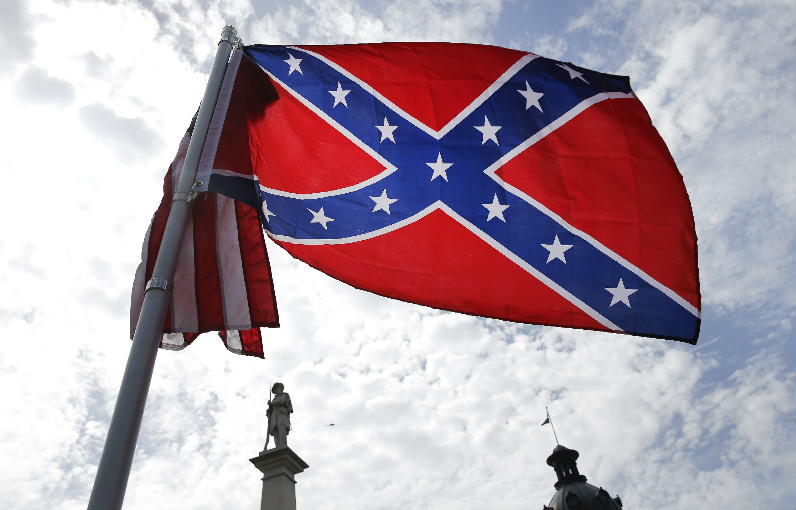 A Confederate flag flies in South Carolina. (Associated Press)
A Confederate flag flies in South Carolina. (Associated Press)
It’s not surprising that we seem to be refighting the Civil War, since it never properly ended in the first place.
It might have, had Southerners listened to Robert E. Lee. The defeated general believed that erecting monuments to the Confederacy — such as his equestrian statue in Charlottesville, now shrouded with a black tarp in mourning of Heather Heyer — would be wrong.
“I think it wiser … not to keep open the sores of war but to follow the examples of those nations who endeavored to obliterate the marks of civil strife, to commit to oblivion the feelings engendered,” he wrote in 1869 about proposed memorials at Gettysburg.
As soon as they got the chance, Southerners ignored Lee’s advice. After the last federal troops were withdrawn from Southern capitals in 1877, whites began the process of re-subjugating African-Americans. It didn’t take long: By the 1890s, blacks were being deprived of voting rights and terrorized by the Ku Klux Klan as the scaffolding of Jim Crow oppression was erected.
The Confederate memorial in Orangeburg, South Carolina, my hometown, was dedicated in 1893. It was one of the early ones; most throughout the South were built after the turn of the century. They were symbols of defiance, intended to let African-Americans and the federal government know who was back in charge.
My great-grandfather, Maj. John Hammond Fordham, was among the many black Southerners who were able to take advantage of the brief window of opportunity known as Reconstruction. Born in Charleston in 1854, he became a lawyer and held a series of government jobs, working at the imposing Custom House near the port. He was called “Major” because he was one of the founders of the Carolina Light Infantry, equivalent to a volunteer national guard unit and described by the Orangeburg Times and Democrat as “the first colored brigade organized in the South.” He was active enough in Republican politics to correspond with Theodore Roosevelt.
Maj. Fordham moved to Orangeburg and built the house I grew up in. He and his wife had nine children, eight of whom survived to adulthood, and he was able to give them the education and resources they needed to build on the foundation he had laid. But the children’s options, and those of the following generation, were deliberately and systematically limited by Jim Crow. The Fordhams achieved much, but only in spite of the circumstances the white power structure imposed.
The triumph of the civil rights movement eliminated legal oppression, but in many ways the states of the old Confederacy never fully rejoined the union. The South remained a region apart, after the Lyndon Johnson years becoming as solid a Republican bastion as it once had been for the segregationist “Dixiecrats.”
Now, however, the South is becoming a different and more complicated place. One of the biggest and most important changes is a widening urban-rural split. Cities have become increasingly cosmopolitan, home to growing numbers of minorities, immigrants and transplants from other parts of the country. On maps showing party affiliation, cities such as Dallas, Birmingham and Atlanta are bright blue dots on fields of red.
And cities are where some of the most prominent Confederate statues and other memorials happen to be. So it was inevitable that those monuments to a lost war fought in defense of slavery — or, if you prefer, symbols of the birth of Jim Crow segregation — would come under critical scrutiny.
As for me, I couldn’t care less about most street names. I sometimes commute to work on Lee Highway. I’ll bet half the people driving down that road at any given time — including millennials, Salvadoran immigrants, government workers who grew up in Utah or Vermont — wouldn’t know whether it was named after Robert E. or Spike.
Roads bearing a secessionist’s full name are a bit different. The United Daughters of the Confederacy intended Jefferson Davis Highway, which begins in Arlington, Virginia, to stretch through the South and beyond, all the way to the Pacific. It exists today in many disconnected segments. Alexandria, Virginia, has been working to rename its part of the road for some time. A plaque in a San Diego park designating the western terminus was quietly removed last week.
And the statues? As societies have done for millennia, we erect and prominently display likenesses of figures we admire. When citizens no longer admire the person being honored, they should haul the statues down. They can go to museums or onto the scrap heap of history, where the Confederacy belongs.
Your support matters…Independent journalism is under threat and overshadowed by heavily funded mainstream media.
You can help level the playing field. Become a member.
Your tax-deductible contribution keeps us digging beneath the headlines to give you thought-provoking, investigative reporting and analysis that unearths what's really happening- without compromise.
Give today to support our courageous, independent journalists.
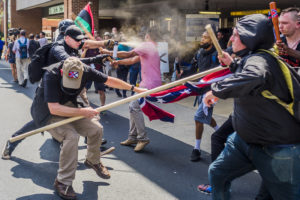
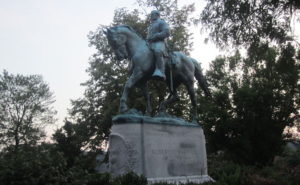

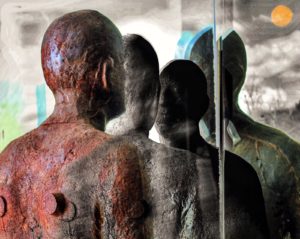

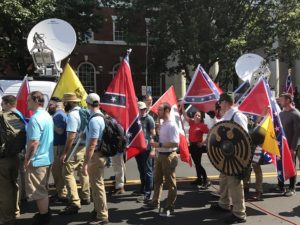


You need to be a supporter to comment.
There are currently no responses to this article.
Be the first to respond.